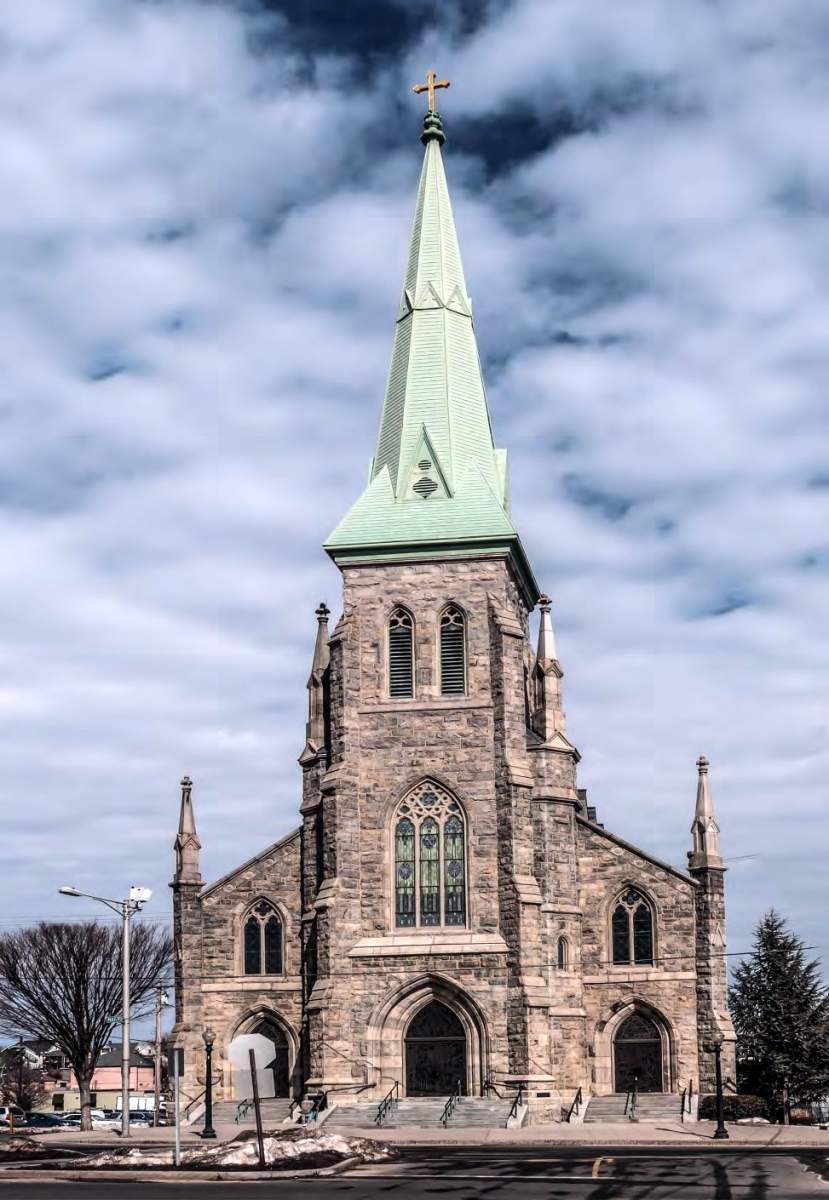

The Parish of St. Peter is the third oldest parish in the Bridgeport diocese, founded in 1851. The church was established by the growing Irish immigrant community, which first occupied a former Universalist church building. By 1870, they were able to commission the leading Catholic church architects of the time to design the current church building. The church's stained glass windows were produced in Munich, Germany, by the F. X. Zettler Company. It was the first Catholic church to be built in northern Fairfield County.
 Photo: View east showing façade. (Tod Bryant)
Photo: View east showing façade. (Tod Bryant)
It served Catholics in all of the surrounding towns and parishioners sometimes walked ten miles or more to Mass on Sunday morning. St. Peter's Church also performed an important role during the nineteenth century in forming associations among its largely Irish parishioners by sponsoring a Catholic Library Association; the Kennedy Guards, a marching group; and St.
Peter's Band, which presented summer concerts in Elmwood Park.
Devlin, William E. Main Street Historic District. National Register of Historic Places nomination. 1983. "Welcome to the Church of St. Peter." Church of St. Peter.
[ view source ]
This is an end gable building that faces west onto Main Street. Its facade is dominated by a square central tower which is surmounted by a spire. The corners of the facade are defined by buttresses surmounted by pinnacles and there are similar, taller buttresses at the junction of the tower and the north and south wings of the facade. There are three entrances in the facade and they are set into polychrome Gothic porches.
There are stained glass windows in Gothic arches above all three entrances.
The church is in the center of downtown Danbury and it is surrounded by commercial and civic buildings.
Date(s): 1870 Style(s): Gothic Revival Historic Use: Church Present Use: Church Architect: Murphy and Keely
Accessibility:
Exterior visible from public road.
Interior accessible (during services and at other times).
The Irish experience has had a profound impact on Connecticut's past, and its narrative spans all periods of the state's history and touches every one of its eight counties and 169 towns.
